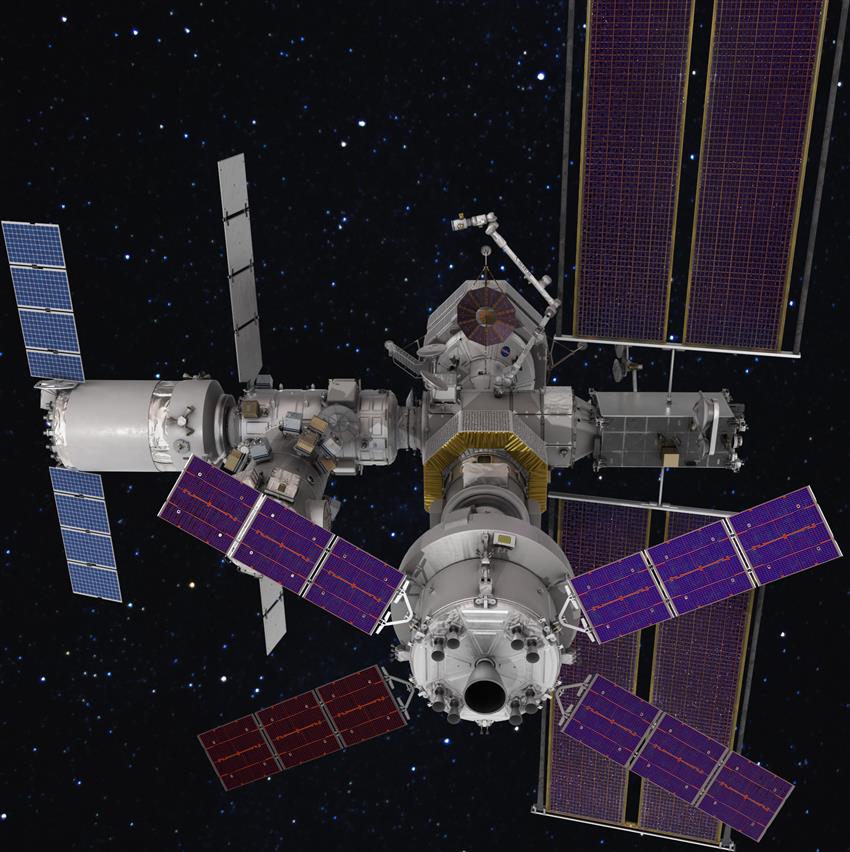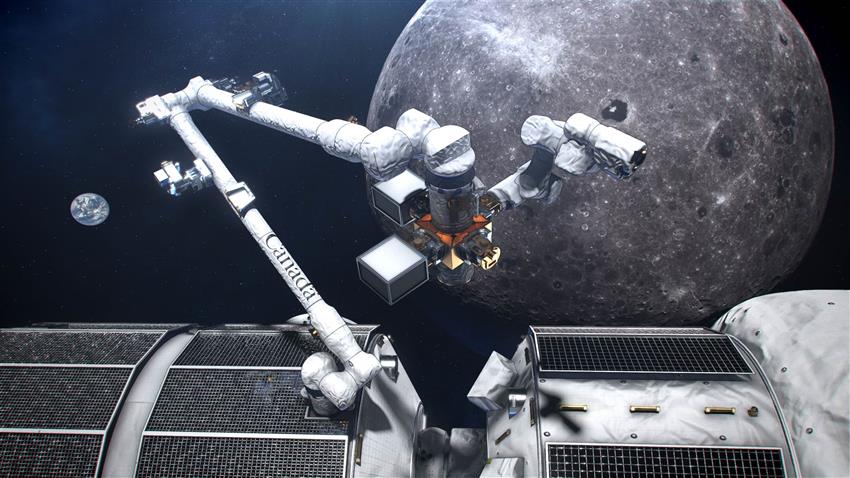Build your own Gateway
People will soon be returning to the Moon, more than 50 years after the Apollo missions. An important step of this new human exploration of the Moon is the construction of Gateway, an international project in which Canada is participating. To learn more about this station and why it will be built, make your own Gateway and discover its different components.
Objective
Using various materials, build a model of Gateway, which will be built around the Moon in the coming years.
Why build a space station orbiting the Moon?
Gateway will be used as a science laboratory and a stepping stone for lunar exploration and, one day, missions to Mars. The purpose of this ambitious project is to pave the way for human exploration of deep space. Since the Apollo missions, which took place in the 1960s and 1970s, no astronaut has travelled beyond low Earth orbit, where the International Space Station (ISS) is located at an altitude of approximately 400 km.
Gateway will help provide a better understanding of the effects of space exploration on the human body, particularly outside Earth's magnetic field, which protects us from harmful space radiation. This station will also provide access to the Moon's surface without needing to build a lunar base for the time being. Furthermore, it will provide a unique view of Earth!
Armed with the knowledge and expertise acquired over more than 20 years thanks to the ISS, many countries are willing to go further and push the boundaries of space exploration. Canada will play a major role in Moon exploration!
The various modules of Gateway will make the station functional and safe for astronauts. The station will be built in stages, and the different modules must fit into one another in orbit around the Moon. Not an easy task! Take a close look at the different modules in the illustration and use different materials to represent a few of them in your model.
You will need
- Various materials for building your station. You can use LEGO© bricks or a variety of recycled materials (with permission from an adult, collect a few items from your recycling bin such as empty boxes, paper towel rolls, plastic bottles).
- If you are using recycled materials, you will also need scissors and glue or tape.
How it works
- Take a look at the image above and think about the components that the station needs to be functional. Make a list of the different components you need to include in your model.
- Compare your list to the one below. Have you forgotten anything?
- A habitation module: astronauts will be able to live on the station and must therefore have somewhere to sleep, eat, work and exercise.
- A science laboratory: the astronauts will perform experiments there.
- Solar panels: the station will use the Sun as its main energy source and must have many solar panels.
- Antennas: communication with Earth is achieved via radio waves.

Example of Gateway built with LEGO© bricks. (Credit: Canadian Space Agency)
An important component of the station, and Canada's major contribution, will be the Canadarm3 robotic arm. It will be used for many things, like making sure the station is maintained and helping astronauts during spacewalks. Thanks to artificial intelligence, it will be able to operate all by itself! It can also be controlled by the astronauts on board the station or remotely by controllers on Earth. Canadarm3 can move on the station using its "hands" and multiple joints. Find this long robotic arm on the image below and be sure to include it in your model!
Note to educators
- Talk about the challenges related to the construction of Gateway. How is it different from the construction of the ISS, which has been orbiting Earth for more than 20 years?
- Would the kids like to travel to the Moon?
- Tell the kids to what extent a project of this scale requires expertise from different people and teams, and even several countries! Think about the different types of jobs that need to be done, for example, building the components, launching the different modules, training the astronauts, and performing scientific experiments.
Curriculum focus areas
Key concepts related to the science curriculum
- Space exploration
- Canadian and global contributions to research and space exploration technologies
- Conditions in space compared to those on Earth
- Costs and benefits of space exploration
Complementary knowledge
- Lunar orbit
- Earth–Moon distance
- Scientific research focused on the Moon from space


